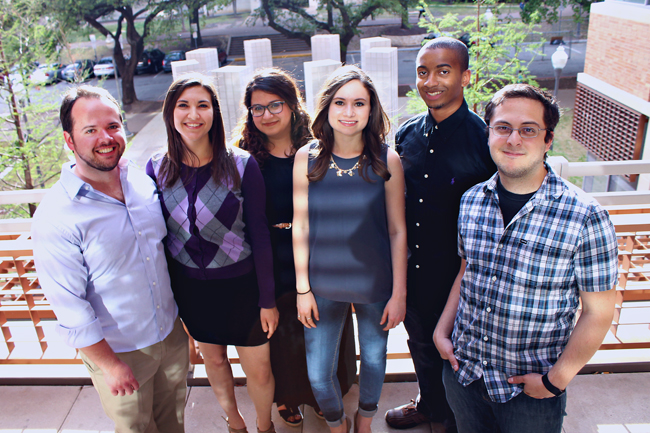Thanks to a group of students on campus, charging your phone may be as easy as taking off your shoe.
Electrical and computer engineering senior Darla Hollander and her team at Everywhere Energy are attempting to harness the kinetic energy students exert as they walk to create a way for students to charge their phones with a shoe insert.
Hollander, the CEO of Everywhere Energy, said it was her fascination with sustainable energy that inspired her to create the company in
October 2011.
“It’s energy that is already here,” Hollander said. “We’re moving around, so we might as well capture the energy we create withwalking.”
Hollander gathered a team of five other UT students to help her with Everywhere Energy in April 2013. They began exploring the idea of creating a type of wearable technology that could harness energy and be used later to charge devices.
Rory Tatum, chief technology officer and electrical and computer engineering senior, began researching technology that would allow them to make this possible. He stumbled across a shoe insole project that the Stanford Research Institute had abandoned almost 10 years earlier. Tatum then contacted the institute and was given not only permission to continue with the project, but assistance to carry it out.
The team enrolled in the Longhorn Startup Lab, a class offered on campus, in order to pursue Everywhere Energy while gaining school credit at the same time. Through the class, they were assigned a mentor who helped them make a plan for creation and distribution of the insoles.
“We decided that since we’re making a shoe insert and that it is a consumer product, it could easily land in the hands of people,”
Hollander said. “Our first target market is college students. They walk more than the average American and use their phones a lot.”
The team pitched the idea at two competitions, the South By Southwest Longhorn Startup Showcase and the Delta Sigma Pi Startup Showcase, and was picked as the best pitch at both.
By 2015, Everywhere Energy hopes to capture 5 percent of the student population at UT and A&M. Jane Gergen, marketing junior and Everywhere Energy marketing director, said these college campuses will help them learn what needs to be fixed with the product.
“UT is great because we can walk around campus and talk with students,” Gergen said. “It gives us a chance to work out all the kinks. This is a controlled environment that we can learn from before expanding.”
Everywhere Energy also plans to use this type of technology in Third World countries, such as Uganda, where electricity is not as readily available. According to The World Bank, 70 percent of Ugandans will have cell phone subscriptions by 2015, yet only 9 percent will have access to electricity. Melinda Haghighatian, chief operating officer and electrical and computer engineering senior, said Everywhere Energy could help with these problems.
“Our ultimate goal is to get into Third World countries so we can provide them power,” Haghighatian said. “That’s a big market and a big need as well.”
Hollander said they are looking into making more products like the shoe insert that will harness energy effortlessly.
“The shoe insert is really just the first step,” Hollander said. “We really just need to continue to harness that energy that we exert everyday, in terms of consumer electronics.”
The company also has plans to make its products wireless. According to Tatum, this technology is not available yet, but it is something they’d like to explore.
Gergen and Hollander plan to join Everywhere Energy full time once they graduate, and the rest of the team also plans to contribute part time after leaving UT. Whether it’s a college campus or a village in Uganda, Hollander said she is trying to give people access to energy they don’t currently have.
“It’s sustainable and convenient,” Hollander said. “It’s a more global solution to an energy crisis.”















